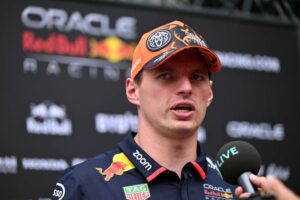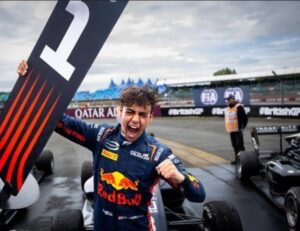During the 2024 Formula 1 season, Red Bull Racing has been the team to beat, with a dominant performance thanks to their RB20 car. However, even the best teams are not immune to mistakes, and Red Bull’s performance at the Las Vegas Grand Prix provided a rare instance of a setback. Helmut Marko, Red Bull’s motorsport advisor, admitted that the team made a critical error with their car setup, specifically with their rear wing design. The mistake was related to the angle of the rear wings, which were set too steep for the high-speed circuit in Las Vegas.

The steepness of the rear wing’s angle created significant aerodynamic drag, which caused Red Bull’s cars to lose valuable straight-line speed. Marko revealed that this flaw meant the Red Bull cars were approximately 7 km/h slower than their main competitors, Mercedes and McLaren, on the straights. In Formula 1, such a speed difference on long straights can make a huge impact on overall race performance, as top speed plays a major role in overtaking and race strategy.
The Las Vegas circuit, which features long, high-speed straights combined with sharp corners, places a premium on having a well-balanced car setup that can excel in both types of sections. Red Bull has typically been strong in cornering, often having superior downforce and handling. However, their loss of straight-line speed in Las Vegas exposed a rare vulnerability in their car design. The steep rear wings compromised the aerodynamic efficiency of the car, increasing drag and slowing down the vehicle’s top speed, especially on the long straights of the Las Vegas track.
This problem was compounded by the performance of other teams, particularly Mercedes and McLaren. Both teams, with their more favorable rear wing setups, managed to capitalize on Red Bull’s weakness. With more streamlined aerodynamic configurations, these teams were able to extract more speed on the straights, giving them an edge in races like Las Vegas, where top-end speed is critical for overtaking and maintaining position.
For Red Bull, the rear wing issue in Las Vegas was a clear anomaly in what had otherwise been a highly successful season. The team, renowned for its aerodynamic expertise under the leadership of Adrian Newey, is usually one step ahead when it comes to car setups. This mistake, though, shows that even a small error in aerodynamics can have significant consequences. Marko’s admission of the error highlights the team’s commitment to honesty and self-analysis, acknowledging that perfection is often elusive, even for the best in the business.
Despite this setback, Red Bull’s overall performance in the 2024 season remained strong. Their advantage in other areas, like tire management, strategy, and overall race pace, allowed them to remain competitive, even though Mercedes and McLaren might have had the upper hand in Las Vegas due to their superior top speeds. Red Bull’s drivers, Max Verstappen and Sergio Pérez, also showed their skill in overcoming adversity, although the team did not walk away with the top spot in Las Vegas.
The revelation of this rear wing mistake may have ramifications for Red Bull’s approach to future races, particularly those that feature long straights or high-speed sections, such as the upcoming races in the 2024 calendar. The team will undoubtedly review their aerodynamic setup for the future, ensuring that they don’t repeat the same mistake and maintain their edge over the competition.
This situation serves as a reminder that Formula 1 is a sport of incremental advantages, where even the smallest miscalculation can have a noticeable impact on race results. For Red Bull, this experience will likely serve as a learning moment, reinforcing the need for precision in every aspect of car setup, even when the team is already leading the pack.








